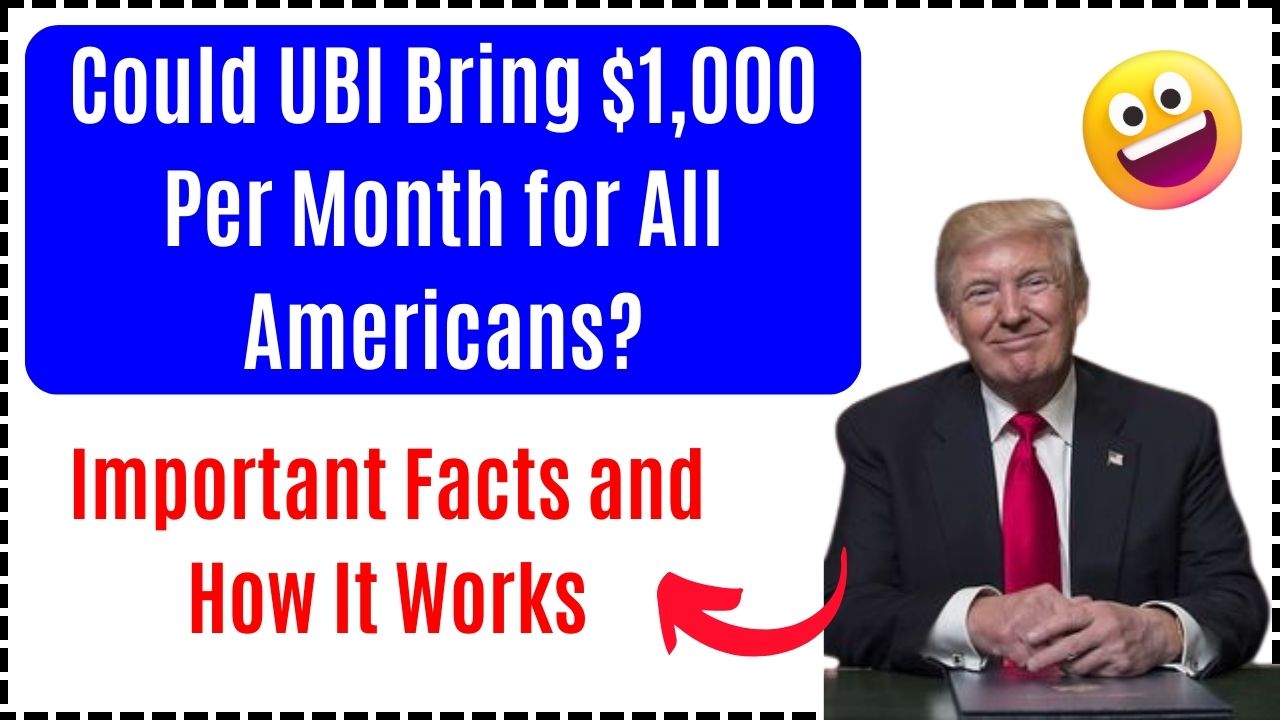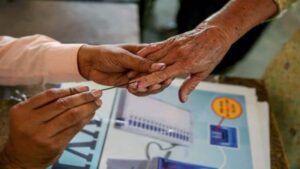Could UBI Bring $1,000 Per Month for All Americans: Universal Basic Income (UBI) has gained attention as a potential solution to modern economic challenges, with advocates claiming it could reduce poverty, stimulate the economy, and improve quality of life. But can a $1,000 monthly payment to every American be achieved? This article delves into how UBI works, the benefits it could bring, the challenges it presents, and its real-world applications.
Could UBI Bring $1,000 Per Month for All Americans
| Key Fact | Details |
|---|---|
| Cost of UBI for $1,000 per month per person | Estimated at $3 trillion annually, a large portion of the federal budget. (moneycrashers.com) |
| Potential impact on poverty | UBI could lift millions of Americans above the poverty line, providing essential financial security. (britannica.com) |
| Economic impact | UBI may stimulate the economy by increasing consumer spending, potentially boosting GDP. (rooseveltinstitute.org) |
| Inflation risk | The influx of money might lead to inflation, diminishing the value of UBI over time. (fool.com) |
| Case studies | UBI trials, such as those in Stockton, California, have shown positive effects on well-being and financial stability. (wikipedia.org) |
Universal Basic Income (UBI) offers a bold solution to economic inequality, providing all Americans with a guaranteed income that could reduce poverty, stimulate the economy, and improve quality of life. However, the program faces significant challenges, including its high cost, potential inflation, and the impact on the workforce.
While UBI is not a one-size-fits-all solution, its growing popularity and the success of pilot programs suggest that it could be a viable policy for addressing modern economic challenges. Further research and experimentation will be essential in determining whether UBI is the right path forward.
What Is Universal Basic Income (UBI)?
Universal Basic Income (UBI) is a form of social security that provides every citizen with a fixed amount of money regularly, typically without any conditions or means testing. Unlike traditional welfare programs, UBI would not be tied to employment status, income, or wealth. The purpose is simple: to ensure a basic standard of living for everyone, regardless of their situation.
This concept is especially relevant today, as automation and technological advancements are changing the job market. UBI can provide financial security in a world where full-time jobs may be harder to come by, particularly in sectors affected by automation.
How Would $1,000 Per Month Work for All Americans?
If the United States were to implement a UBI program offering $1,000 per month to every adult citizen, the numbers are staggering:
- Total Cost: Providing $1,000 per month to every American adult would cost approximately $3 trillion annually, making it one of the most expensive government programs ever proposed.
- Who Would Benefit?: Every U.S. citizen over the age of 18 would receive the monthly payment. While those already financially stable might save or invest the money, lower-income individuals would have more disposable income for essentials like food, rent, and healthcare.
- Funding the Program: To cover the enormous cost, the government would likely need to raise taxes, either by increasing corporate taxes, taxing the wealthy, or implementing new revenue streams such as a carbon tax.
Benefits of UBI
1. Poverty Reduction
One of the primary benefits of UBI is its potential to reduce poverty. According to the Roosevelt Institute, a study on UBI’s impact suggests that providing people with a guaranteed income would significantly improve economic stability for low-income households. With $1,000 a month, many individuals could escape poverty and access basic necessities, contributing to better physical and mental well-being.
2. Economic Stimulus
UBI could act as an economic stimulus by boosting consumer spending. When individuals have guaranteed income, they are more likely to spend it on goods and services, stimulating demand and potentially creating new jobs. The Stockton Economic Empowerment Demonstration (SEED) program in California showed that participants used their payments primarily for necessities like rent and food, which in turn contributed to the local economy.
3. Mental Health and Well-being
Financial security can also alleviate stress and improve mental health. In numerous UBI pilot programs, recipients have reported reduced anxiety, better physical health, and improved overall well-being. The promise of stable income could help individuals focus on personal growth, education, or career changes without the constant pressure of financial uncertainty.
Challenges and Concerns with UBI
Despite its potential, UBI also faces several challenges that need to be carefully considered.
1. High Costs
The most significant barrier to UBI is the cost. At $3 trillion annually, funding such a program would require substantial changes to the U.S. tax system. Critics argue that it would be challenging to sustain UBI without drastically raising taxes or reallocating funds from other essential programs.
2. Inflation
With more money circulating in the economy, UBI could trigger inflation. As demand for goods and services increases, prices could rise, diminishing the value of the $1,000 payments over time. Critics worry that inflation could outpace the benefits of UBI, leaving recipients with less purchasing power.
3. Work Incentives
Some opponents argue that UBI might discourage work. With guaranteed income, people may choose not to work, leading to a reduction in the labor force. However, studies from UBI trials in places like Finland and Kenya have shown that while some individuals reduced their working hours, overall productivity didn’t necessarily decrease.
How Would UBI Be Funded?
There are a few possible ways to fund UBI:
- Higher Taxes: The government could raise taxes, particularly on the wealthy and corporations. This could generate the necessary funds while ensuring that the tax burden is distributed more equitably.
- Cutting Other Welfare Programs: UBI could replace existing welfare programs, including unemployment benefits, food stamps, and housing assistance. This could streamline government assistance and reduce administrative costs.
- New Revenue Sources: New revenue-generating measures such as a carbon tax, financial transaction tax, or even a wealth tax could help fund UBI without directly burdening the middle class.
Global Perspectives on UBI
UBI is not a new idea, and several countries have experimented with or are considering its implementation:
- Finland: Finland’s 2-year UBI trial provided €560 ($600) per month to unemployed individuals. While the trial didn’t lead to higher employment rates, participants reported improved health and well-being.
- Kenya: A long-term UBI trial by an NGO is taking place in Kenya, where people are receiving monthly payments. Early results show positive outcomes in terms of health, education, and entrepreneurship.
- Spain: Spain introduced a form of UBI during the COVID-19 pandemic, providing emergency income to vulnerable families. The results are still being analyzed, but early indications suggest that it helped people survive the economic shocks brought on by the pandemic.
The Political Debate on UBI
UBI is a deeply divisive issue in politics. Supporters from both progressive and libertarian camps see UBI as a way to reduce poverty and empower individuals. On the other hand, conservatives and some economists worry that it would lead to increased government spending, inflation, and disincentivize work.
For example, Andrew Yang, former presidential candidate, strongly advocated for UBI as a solution to the economic challenges posed by automation. He argued that UBI would provide a buffer as industries shift and fewer people are employed in traditional jobs.
UBI vs. Other Social Programs
Compared to traditional welfare programs, UBI has distinct advantages and disadvantages:
- Advantages: UBI is simpler to administer because it’s universal. There’s no need for complex eligibility criteria or bureaucratic oversight. It also guarantees that no one falls below the poverty line, regardless of their circumstances.
- Disadvantages: Traditional welfare programs are targeted, which allows governments to focus resources on those who need them most. Some argue that UBI’s blanket approach might not be the most efficient way to address poverty.
Public Opinion on UBI
Public opinion on UBI has been mixed. According to recent polls, there is growing support for UBI, especially in light of economic disruptions caused by the pandemic and automation. However, the idea still faces significant opposition from those who question its sustainability and effectiveness.
A poll from Pew Research Center found that 49% of Americans support the idea of UBI, while 40% oppose it. This shows a divide but also highlights the growing interest in the concept.
Social Security 2025: These States Will Tax Your Benefits—Are You Affected?
Boost Your 2025 Retirement Pension – Complete Guide to Maximizing Your Earnings!
$1,580 SSDI Checks Set for 4 Payments This Month – Check Eligibility & Payment Date
Challenges in Implementation
Implementing UBI would be a complex process that requires careful planning:
- Political Will: Securing political support from both sides of the aisle is crucial for passing any UBI legislation. UBI’s potential cost and broad scope would require bipartisan cooperation.
- Economic Monitoring: Policymakers would need to closely monitor inflation and other economic indicators to ensure that UBI does not lead to negative side effects.
- Public Education: Public understanding and support of UBI would require comprehensive education campaigns to explain how the program would work and its potential benefits.










